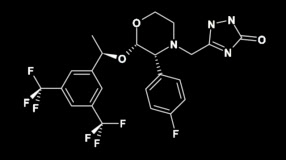skip to main |
skip to sidebar

- phycotoxin (algal toxin) produced by marine diatoms of the wonderfully named genus Pseudo-nitzschia
- diatoms are a type of phytoplankton, microscopic organisms that reside in the world's oceans and lakes and other bodies of water, and are technically classified as algae
- nomenclature-wise, domoic acid is classified as a kainoid amino acid
- kainoid amino acids, named after another phycotoxin called kainic acid, are agonists of AMPA/kainate (i.e. non-NMDA) glutamate receptors and exhibit highly potent neuroexcitatory activity
- glutamate is an excitatory neurotransmitter in the brain, so a glut (ha ha) of domoic acid in the brain results in overexcitation of neurons, leading to neuronal damage
- neurons in parts of the hippocampus and amygdala are preferentially damaged
- first isolated from a variety of red algae in Japan in 1958, but not associated with human illness until it was recovered from a batch of mussels that were responsible for an outbreak of 'food poisoning' in eastern Canada in 1987 that affected over 150 people
- many of the cases featured neurological symptoms including short-term memory loss, leading the illness to be named amnesic shellfish poisoning
- the whole memory loss thing probably ties in with the fact that the hippocampus is associated with memory storage and is damaged by the toxin
- marine creatures that consume phytoplankton, including shellfish (primarily filter-feeding molluscs such as mussels, clams, and oysters) and small fish (e.g. anchovies, sardines), can accumulate phycotoxins in their tissues
- particularly high concentrations are found in these fish and shellfish when toxin-producing phytoplankton are present in high numbers (e.g. during a harmful algal bloom, better known as a red tide, so called due to pigments produced by the phytoplankton)
- these days the best solution to drug and alcohol addiction in California is a good drug treatment program at a reputable California drug detox center, so if you or someone you know is dealing with substance abuse, contact a drug rehabilitation center for help
Jeffery B, Barlow T, Moizer K, Paul S, Boyle C. Amnesic shellfish poison. Food Chem Toxicol. 2004 Apr;42(4):545-57. Review.

- given to people after an operation or when they going through chemo to decrease their chances of puking their guts out or feeling like they are going to
- people vomit in these situations because the drugs that have been given are detected in the blood by an area of the brain called the chemoreceptor trigger zone, which perceives them as being toxic substances and signals the appropriate parts of your body to cause you to upchuck
- stops the barfing by antagonizing effects mediated by substance P
- substance P is a peptide that whoever discovered it apparently couldn't bother to give it an actual name
- honestly, even a boring name like, oh, I dunno, aprepitant would have been fine
- substance P likes to bind to a type of receptor called neurokinin 1 in the brain and make you hurl
- generally used in conjunction with serotonin receptor antagonists, which are better at arresting the anti-digesting
Herrstedt J, Dombernowsky P. Anti-emetic therapy in cancer chemotherapy: current status. Basic Clin Pharmacol Toxicol. 2007 Sep;101(3):143-50. Review.

- mycotoxin produced by various members of the fungal genus Penicillium, including it's namesake, Penicillium griseofulvum
- binds to microtubules and disrupts fungal cell mitosis, also inhibits nucleic acid synthesis
- net effect: prevents the fungus from growing, allowing the immune system to kick some tail
- the first oral drug developed for the treatment of ringworm
- usually indicated for use when topical treatments for ringworm fail to do anything
- ringworm is a freakin' misnomer, it's actually a related group of fungi called dermatophytes that are able to infect the skin, hair, and nails of people and some animals
- ringworm infections are usually confined to the superficial layers of the skin
- ringworm is also referred to as tinea X, where X =
- barbae - bearded areas of the face and neck
- corporis - trunk, legs, and arms
- cruris - groin (jock itch)
- pedis - feet (athlete's foot)
- unguium - fingernails or toenails
- is able to somehow preferentially accumulate in the keratinous layer of the epidermis (the upper layers of the skin), making it really good at attacking ringworm
- development timeline:
- 1939 - first isolated from a culture of Penicillium griseofulvum
- 1955 - discovered to be very active in vitro (i.e. on a lab bench) against pathogenic skin fungi, but topical ointments were not found to be any better than existing ones
- 1958 - publication of a report on the successful treatment of experimental fungus infections in guinea pigs by oral administration of griseofulvin, first used successfully in humans
- suboxone is a detox drug that can be used to treat opiate addiction
- Flint A, Forsey RR, Usher B. Griseofulvin, a new oral antibiotic for the treatment of fungous infections of the skin. Can Med Assoc J. 1959 Aug 1;81(3):173-5. [link to full article]
- http://en.wikipedia.org/wiki/Griseofulvin





